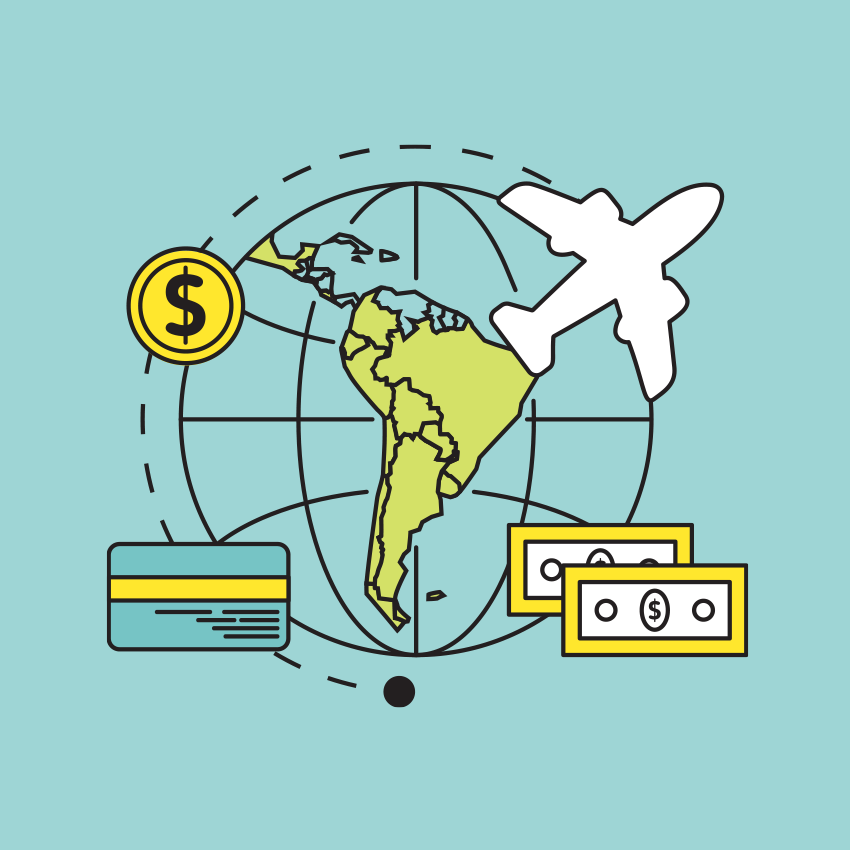From domestic-only credit cards to revolutionary instant payment Pix, we bring in this blog post up-to-date, exclusive data about how Brazilians pay and what that means for your company.
Besides being the largest economy in Latin America, Brazil is also in the world's top 15. This makes it an attractive prospect for the ecommerce merchant.
However, its payments ecosystem is considerably different from Europe or the US, where most customers use internationally accepted card types or e-wallets like PayPal to make online payments.
From the Pix phenomenon to local debit and credit cards, Brazil has a completely different online payment system with some unique options for the territory. To reach this market's full sales potential, accepting Brazilian local methods is essential.
That's why we prepared this article, in which we explore the main popular local payment methods in Brazil with details on each one and their impact on e-commerce in the country.
E-commerce in Brazil
The effects of Covid-19 pandemic caused events that would be irreversible for Brazil: the exponential growth of the era of electronic commerce.
With the immense smartphone penetration in the country of 90% among the adult population and e-commerce revenue reaching US$153 billion in 2021, we can say that it has become the most digitized in Latin America.
Another important statistic that has consequently increased is the percentage of around 75% of Brazilian consumers shopping online. This is equivalent to more than 128 million Brazilians.
The pandemic has also affected the way Brazilians pay for their goods and their adherence to digital banks has increased significantly: in 2021, 88% of the Brazilian population joined digital accounts.
In this way, many payment methods have emerged as more practical and safe options in virtual stores, both for consumers and companies that offer other methods. Let's talk about the most popular payment methods used in local e-commerces below.
Credit and debit cards
Credit and debit cards are one of the most preferred ways by Brazilian consumers when making a purchase.
Their functions, although similar, present unique differences that influence the buyer's choice when choosing which method to use. We will address each of them below.
Credit cards
This method is the most popular means used by Brazilian citizens, according to surveys. In 2021, domestic credit cards alone accounted for 46% of e-commerce sales in Brazil.
The great motivation for opting for this means is the possibility of dividing their purchases in installments and also of not using the balance of their bank accounts.
Other factors pointed out by the Credit Protection Service (SPC) are:
- greater security offered by cards;
- being able to pay for a product even if you don't have money;
- have long deadlines to pay off debts made.
The white paper Digital Renaissance in Latin America by BoaCompra shows that 36% of the Brazilian adult population has a credit card. However, many recognized international card brands operate differently in Brazil.
According to BoaCompra's estimates, only 11% of cards in Brazil are enabled for international purchases, against 54% of local domestic cards — that is, those that do not have this function enabled.
Research by BoaCompra shows that the Visa, Mastercard and American Express brands represent more than 80% of the cards issued in the country.
Also, almost all local cards allow installment payments. In 2018, only 52.6% of Brazilians chose to pay in a single installment. This is an increase from previous years. However, this still leaves 26.6% of Brazilians paying in 4-12 installments for items online.
Installments are an enabled and accepted part of the local payment ecosystem. International card schemes, such as Visa and Mastercard, and local ones, such as Hipercard and Elo, authorize the function.
To ensure success in Brazil, it is extremely important to offer payments to a variety of local cards. The most relevant issue in this topic is to provide divisions that really attract local customers.
Although the credit card method is the most sought after in the country, it is limited to an estimated 36% of people who do not have access to it, as we pointed out earlier. This represents more than 100 million Brazilians who want to consume products and/or services online.
An important lesson for businesses that wish to operate their businesses in the country is to offer a variety of methods, aiming to serve this section of the population.
Debit cards
The debit function, although much less used by Brazilians, allows using the bank account balance instead of the limit stipulated by the credit card company.
This method is used by consumers who do not like to use the credit function, that is, they prefer to pay in cash. Brazilians who use the debit function of cards correspond to a much lower percentage of those who use credit.
According to data analyzed by BoaCompra, this method accounted only for 2% of e-commerce sales in the country in 2021. Another relevant data are the main international brands (Visa and Mastercard) that represent more than 60% of debit cards issued in the country .
Pix on the rise among payment methods
Created by the Central Bank and launched on the market in 2020, this payment method is gaining more and more popularity in Brazil — and becoming an alternative to boleto. The big difference of Pix is in the practicality and speed of payments and transfers made. They can be done anytime, 24 hours, 7 days a week, including holidays.
Payments are confirmed instantly and completely digitally, being executed only with a phone. The step consists of scanning a QR Code on the checkout page or adding the Pix keys into the respective banks' apps. They can be created from CPF, CNPJ, e-mail, phone number, random codes, among other formats.
Some of the main benefits of Pix are:
- lower costs compared to other methods;
- you don't need to have a bank account, you can use a digital wallet as an option;
- 100% secure information in accordance with the LGPD and bank secrecy law.
Pix's growth among payment methods is exponential and very fast. The percentage of its use in e-commerce in the country in 2021 represented 15% of total revenue. Some other merchants also report that this payment method is already responsible for 50% of purchases made on their e-commerces.
By 2025, BoaCompra analyzed that these numbers could rise to 31% of e-commerce transactions in the country, ranking second among the most used methods.
Digital wallets are gaining popularity
M-Commerce, or mobile e-commerce, is gaining ground in Brazil. It grew 41% in 2018 alone, representing 42.8% of total e-commerce. Unsurprisingly, this is leading to an increase in e-wallets like PayPal, PagBank and Mercado Pago.
Ease of integration with mobile e-commerce and low barriers to entry have made it a growing market segment. As of 2018, e-wallet payments accounted for 12% of all e-commerce sales.
The increasing rates in mobile device adoption in Brazil mean that this trend is likely to increase. PayPal and PagSeguro remain two of the most popular digital wallets in Brazil.
Statistical data gathered by the BoaCompra team reveal that digital wallets only tend to grow. By 2024, this method may already be capable of moving 36 billion dollars, surpassing the estimates of the traditional bank slip.
Importantly, international e-commerce retailers must integrate local card top-up schemes to take full advantage of this trend. By partnering with a local aggregator, customers can top up their PayPal digital wallet using a local card. In turn, this will likely increase conversions at checkout.
Bank slip and its popularity
In Brazil, just under a third of the population has no bank account. However, that didn't stop them from buying items online. For this and other reasons, the bank slip — or boleto — was created.
Boleto is an exclusively Brazilian payment method created in 1993 by the Brazilian Federation of Banks (Febraban). The main objective of this means of payment is to make local commerce consumption more accessible to people without bank accounts or who do not use cards.
The steps consist of issuing it through local banking institutions and the consumer making the payment in cash. Confirmation takes 1 to 3 business days.
To pay using a boleto, users simply fill in their details online to generate a barcode. This can be taken to a large number of ATMs, banks or even lottery houses to pay in cash.
They are still very popular with local e-commerce merchants as they greatly expand their customer base. We can mention the main advantages as:
- facilitated billing: the company can send the potential consumer's bank slip by e-mail;
- possibilities to increase the range of customers by including those who have no bank accounts or credit cards;
- availability of discounts: offer the individual payment with a discount in cash;
- guaranteed security to the customer and the company.
Recent changes have been made to the law to increase its security. All boletos must now be registered. This puts its details into a centralized financial record, preventing information discrepancies and fraud.
By partnering with a local payment aggregator such as BoaCompra, you can ensure that it is totally advantageous to offer the registered bank slip and attract the largest possible customer base in Brazil.
Boleto is a very common form of cash payment in Brazil; however, it is increasingly falling into disuse, representing about 11% of online purchases — a rate that is expected to drop to 8% by 2025.
The decrease in its use occurs due to some disadvantages. The main ones are:
- slow payment confirmation, which may take up to 3 business days;
- customer withdrawal from making the purchase, which is harmful to the company;
- unnecessary fees charged by banks when issuing bank slips;
- launch of Pix by the Central Bank.
The latter was one of the main pillars that led to the drop in its use in e-commerce in the country as well as in the traditional market. We will address the topic below by bringing you information on this payment method that has revolutionized the field in the country.
PagBank is part of the digital finance revolution in Brazil
As mentioned earlier, PagSeguro is one of the most popular e-wallets in Brazil. As a result of this popularity, PagSeguro gave rise to a banking entity, PagBank.
PagBank is part of a new wave of e-banking services that arrives in Brazil. These digital banks allow customers to open and manage bank accounts through online portals. As a result, they are also opening up the banking landscape to a large population in Brazil that previously had no bank accounts.
By keeping an eye on the growing number of digital banks, e-commerce merchants can ensure that they offer the widest possible range of checkout options to their customers. By doing so, they can guarantee higher conversion rates on the checkout page.
BoaCompra as an investment driver in Brazil
In order to offer all popular payment methods in Brazil and guarantee the operation of your business in the country, it is necessary to have a safe and reliable integration to leverage your investments.
BoaCompra by PagSeguro has a unique payment processing API solution that allows companies to access Brazil and all of Latin America to offer payment methods and local currencies in a simple and practical way.
With a single integration, the solution offers over 100 payment methods in 17 countries and sends money anywhere in the world with no surcharges.
Among other benefits, we can highlight:
- payments processed quickly and easily;
- money collected and sent to the merchant's checking account in local currency;
- easy and fast integration with the biggest e-commerce plugins.
Operating in the market for over 15 years and with extensive experience in the B2B segment, BoaCompra is a reference in the online gaming segment, offering services to large companies such as EA, Riot Games and Ubisoft.
While reading this article, you were able to understand the main payment methods in Brazil and perfectly understand the scenario of each one in local e-commerce.
If you enjoyed this post, you might also be interested in how offering a local payment method increases SaaS sales in Latin America.





